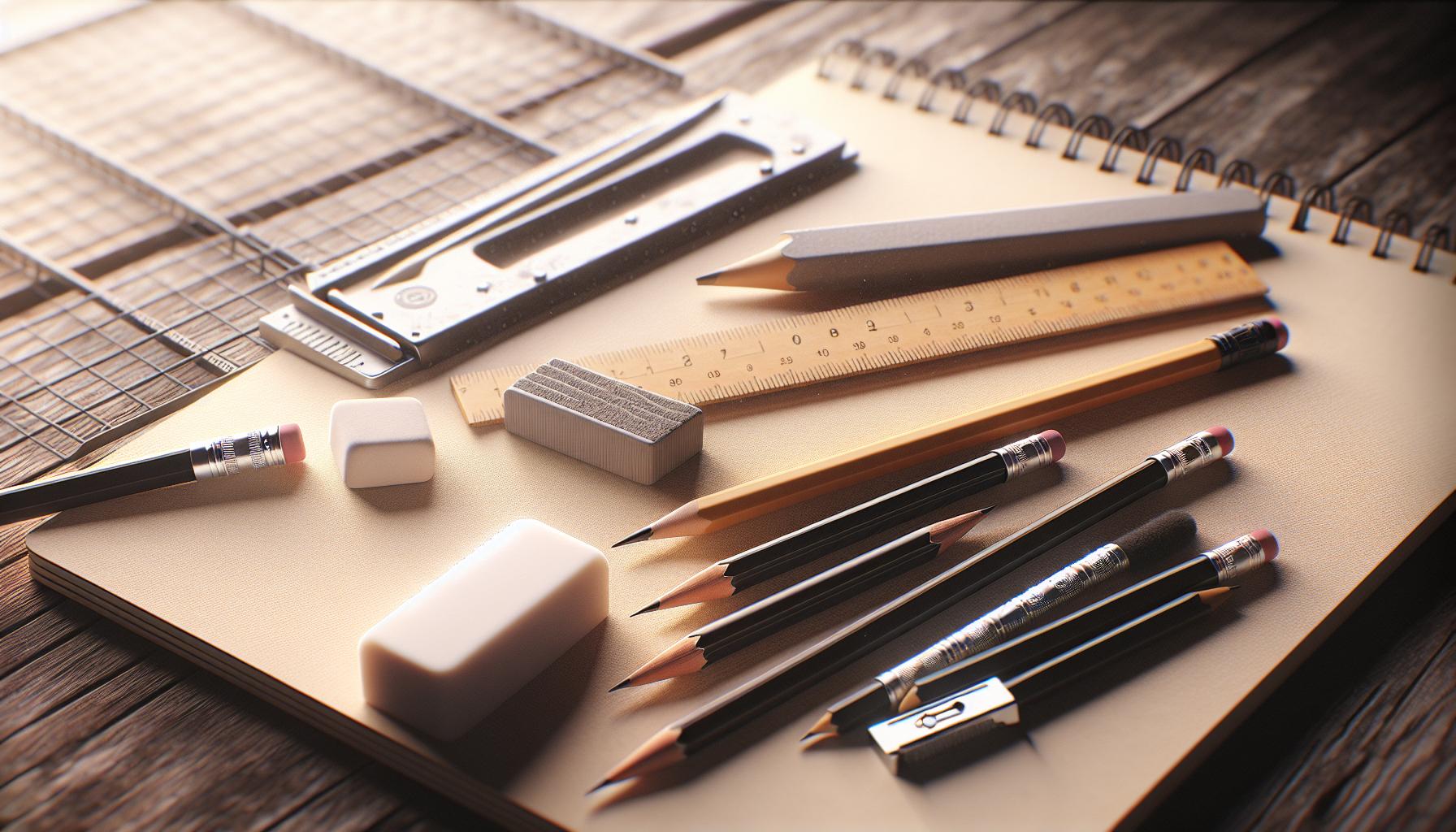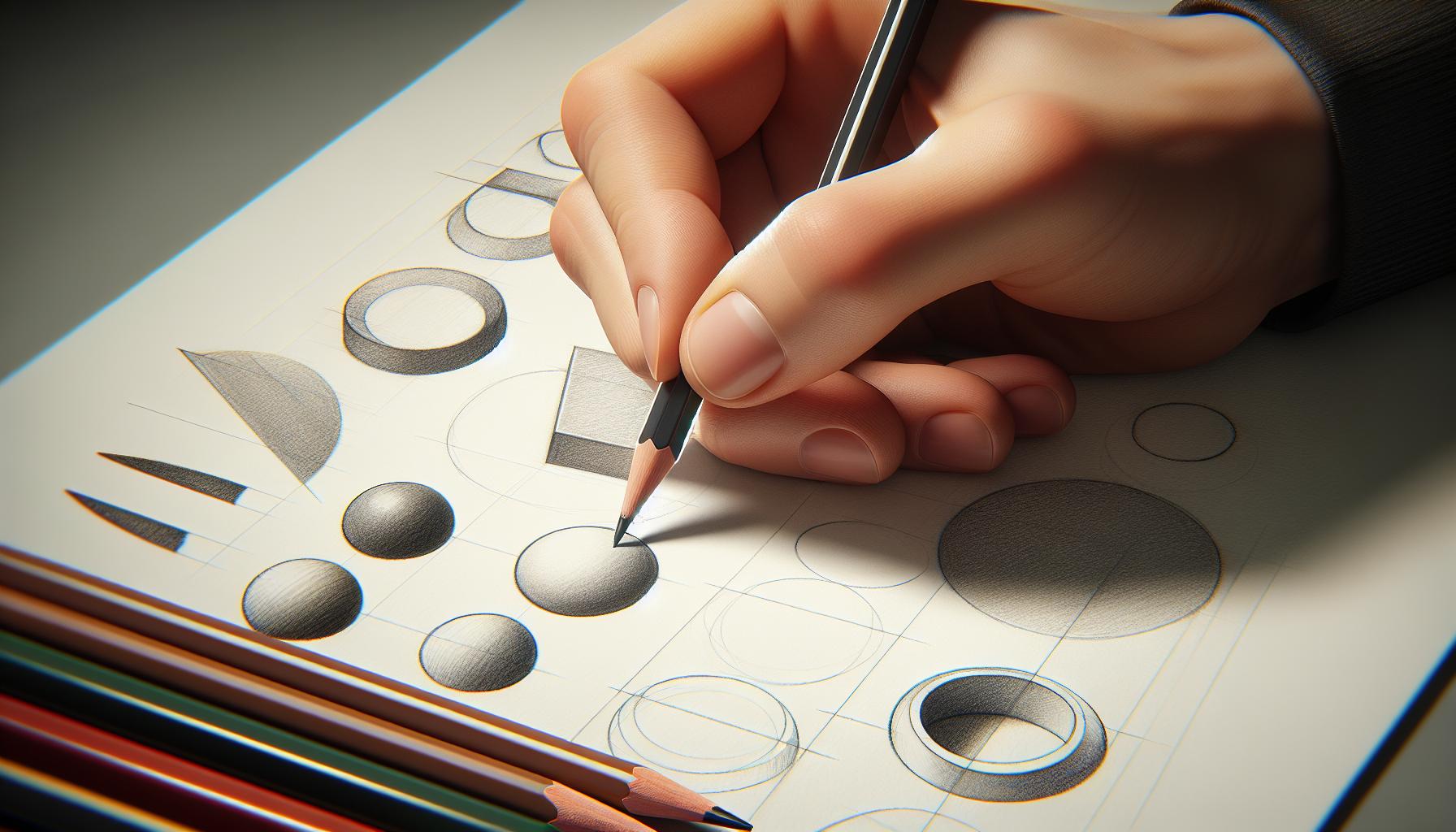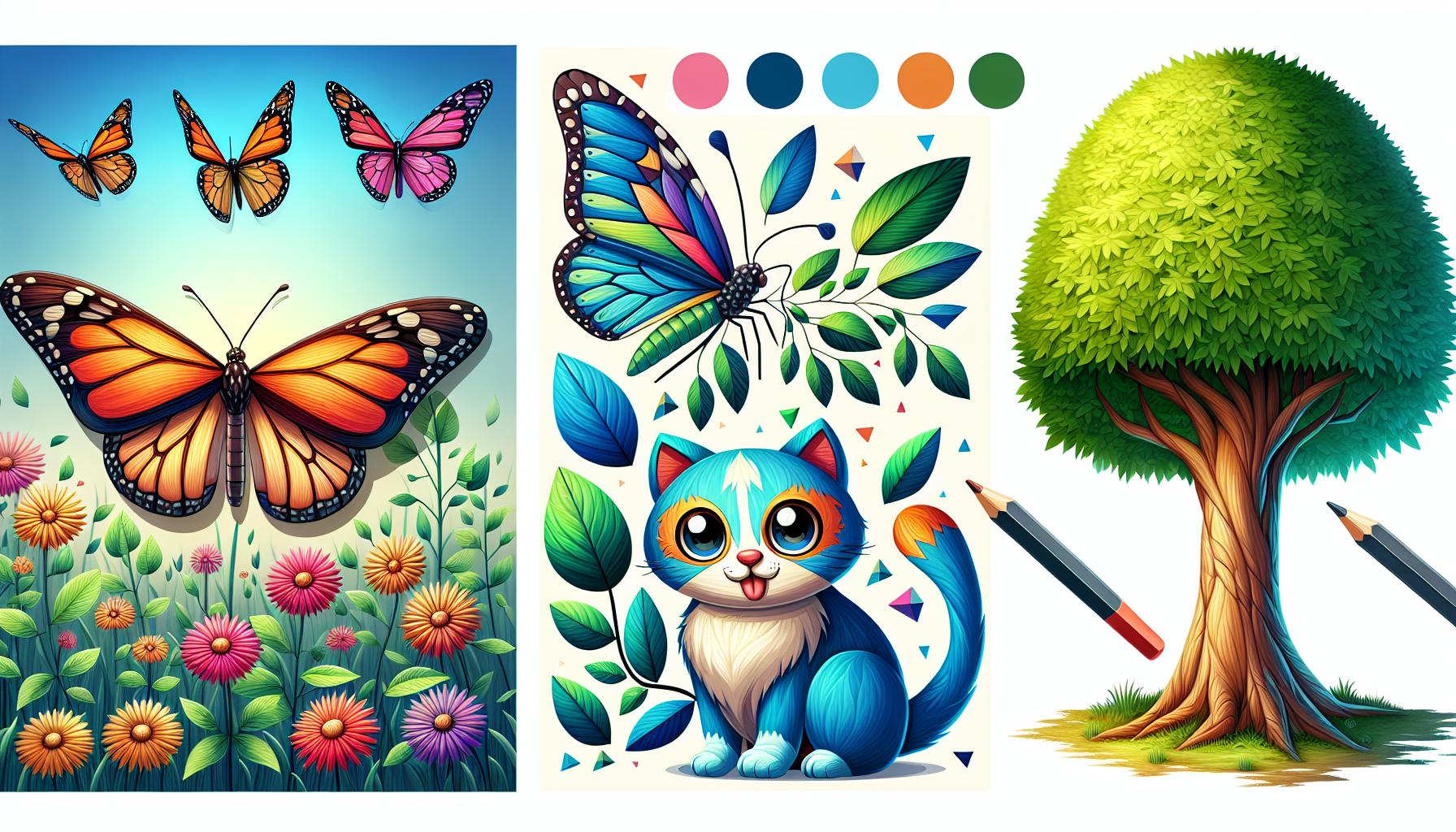Drawing can be an intimidating hobby for beginners, but “faciles dibujos” (easy drawings) offers a perfect starting point for aspiring artists. These simple sketches help novices develop fundamental skills while creating charming artwork they can be proud of.
From cute animals to basic landscapes, easy drawings break down complex subjects into basic shapes and lines that anyone can master. Whether someone’s looking to develop their artistic abilities or simply find a relaxing creative outlet, these beginner-friendly techniques provide an accessible path into the world of art. What makes these drawings truly special is how they transform seemingly difficult subjects into manageable steps that build confidence with each completed piece.
Faciles:iddkrj009em= Dibujos
Easy drawings (dibujos fáciles) create simple artistic expressions using basic shapes lines dots or patterns. These beginner-level sketches incorporate fundamental artistic elements: circles squares triangles straight lines curved lines. Artists start with elementary forms to construct recognizable objects characters or scenes.
Common subjects for easy drawings include:
- Animals (cats dogs rabbits birds)
- Nature elements (flowers trees mountains clouds)
- Cartoon characters (emoji faces superheroes stick figures)
- Simple objects (houses cars food items geometric patterns)
The step-by-step process follows this structure:
- Start with basic geometric shapes
- Connect shapes with simple lines
- Add essential details
- Include basic shading or textures
- Complete with minor embellishments
| Skill Level | Time Investment | Required Materials |
|---|---|---|
| Beginner | 5-15 minutes | Pencil paper |
| Intermediate | 15-30 minutes | Pencil eraser paper |
| Advanced | 30+ minutes | Full art supplies |
These drawings emphasize three core principles:
- Simplification of complex forms
- Focus on essential features
- Minimal detail requirements
- Practice fundamental art techniques
- Build muscle memory for sketching
- Develop spatial awareness
- Create quick artistic expressions
- Master basic composition skills
Essential Materials for Simple Drawing

Creating simple drawings requires a minimal set of fundamental art supplies to get started. These basic tools form the foundation for practicing easy drawing techniques.
Basic Drawing Tools
Standard #2 pencils provide ideal control for basic sketching with medium-dark lines. A quality sketching paper pad measuring 9×12 inches offers ample space for practice drawings. White vinyl erasers remove pencil marks cleanly without damaging paper surfaces. A basic pencil sharpener maintains precise points for detailed linework. A ruler helps create straight edges for geometric shapes. These five core items cost under $20 total at most art supply stores.
| Essential Tool | Purpose | Estimated Cost |
|---|---|---|
| #2 Pencils | Basic sketching | $3-5 |
| Sketch Pad | Drawing surface | $5-8 |
| Vinyl Eraser | Clean corrections | $2-3 |
| Sharpener | Point maintenance | $2-4 |
| Ruler | Straight lines | $1-2 |
Optional Art Supplies
Colored pencils expand drawing possibilities with 12 standard hues. Drawing pencils in varying hardness grades (2H to 6B) create different line weights. Blending stumps smooth shading transitions between tones. Fine-point markers add bold outlines to finished sketches. A portable drawing board provides a firm surface for working anywhere. Kneaded erasers mold into points for precise erasing. These supplementary materials enhance drawings after mastering basic techniques.
| Optional Supply | Function | Price Range |
|---|---|---|
| Colored Pencils | Color work | $8-15 |
| Drawing Pencils | Line variety | $10-20 |
| Blending Tools | Smooth shading | $3-6 |
| Fine Markers | Bold outlines | $5-12 |
| Drawing Board | Firm surface | $15-25 |
Step-by-Step Drawing Techniques

Basic drawing techniques follow a systematic approach that transforms simple shapes into detailed artwork. This method breaks down complex subjects into manageable components for easier replication.
Starting with Basic Shapes
Elementary shapes form the foundation of all drawings: circles create heads, squares establish buildings, triangles define mountains. Drawing begins by lightly sketching these basic forms as guidelines. A cat’s body starts as an oval, its head as a circle, legs as rectangles. Position these shapes with light pencil strokes to create a rough framework. This geometric foundation ensures proper proportions and spatial relationships between elements. Artists map out the complete composition using these fundamental shapes before adding intricate details.
Adding Details and Shading
Details transform basic shapes into recognizable objects through careful layering of elements. Eyes, whiskers, fur textures emerge by applying varying pencil pressures. Light shading starts from the outer edges, gradually building depth toward darker areas. Cross-hatching creates texture using intersecting lines at 45-degree angles. Erasing strategic areas adds highlights that create dimension. Artists apply darker values in shadow areas beneath objects or in recessed spaces. Small details like fur patterns, scales, or leaf veins enhance realism while maintaining simplicity.
Popular Easy Drawing Ideas for Beginners

Easy drawing ideas provide a creative starting point for novice artists to practice fundamental techniques while creating recognizable artwork. These beginner-friendly projects focus on simple subjects that build confidence through achievable results.
Nature and Animal Drawings
Nature-inspired drawings offer accessible subjects for beginners to practice essential techniques. Simple flowers like daisies start with basic circles for centers surrounded by oval petals. Trees incorporate triangular shapes for evergreens or rounded forms for deciduous varieties. Basic animals emerge from circles triangles connecting to create cats dogs rabbits. Cloud landscapes combine curved lines with minimal shading while mountains use triangular shapes with graduated tones. Adding texture through dots lines creates grass foliage effects. Common nature drawings include:
- Butterflies using symmetrical wing patterns
- Seashells based on spiral shapes
- Simple birds formed from oval bodies
- Fish designs with curved lines
- Leaf patterns following natural veins
Cartoon Character Sketches
Cartoon characters combine basic geometric shapes to create expressive faces bodies. Simple emoji-style faces start with circles adding curved lines for emotions. Stick figures evolve into basic human forms through rounded rectangles cylinders. Popular cartoon subjects include:
- Cute animals with exaggerated features
- Basic superhero designs
- Simple robot characters
- Chibi-style figures
- Expression practice faces
Adding personality through simple details like hats accessories enhances character designs. Focusing on key identifying features creates recognizable characters without complex details. Basic poses convey movement through stick figure foundations modified with rounded shapes.
Tips to Improve Your Drawing Skills
Regular practice with specific techniques enhances drawing abilities effectively:
- Start with basic shapes
- Draw circles squares triangles repeatedly
- Connect shapes to form complex objects
- Practice geometric forms for 15 minutes daily
- Master line control
- Draw straight lines without rulers
- Create smooth curved lines in one motion
- Vary line weight for depth dimension
- Observe reference materials
- Study real objects before drawing
- Take reference photos for practice
- Focus on light shadow placement
- Use proper grip techniques
- Hold pencils at 45-degree angle
- Rest hand on paper’s edge
- Control pressure for varied tones
- Practice perspective drawing
- Draw cubes from different angles
- Create one-point perspective scenes
- Add depth using size relationships
- Implement daily sketching
- Draw for 30 minutes each day
- Create quick 5-minute sketches
- Fill one sketchbook page daily
- Study proportions
- Measure object relationships
- Use alignment techniques
- Compare sizes between elements
- Focus on shading techniques
- Create smooth gradients
- Apply cross-hatching methods
- Practice circular shading motions
- Experiment with compositions
- Arrange elements strategically
- Use rule of thirds
- Balance positive negative space
- Learn from mistakes
- Analyze unsuccessful drawings
- Identify problem areas
- Make corrective adjustments
These techniques build fundamental skills through consistent application focused on specific aspects of drawing development.
Common Drawing Mistakes to Avoid
Incorrect proportions derail drawing success when artists eyeball measurements instead of using basic geometric shapes as guidelines. Pressing too hard with pencils creates deep indentations in paper making erasing difficult. Rushing through sketches without planning leads to unbalanced compositions.
Drawing from memory produces inaccurate results compared to using reference images or real objects. Poor pencil grip causes hand fatigue cramping artistic flow during extended drawing sessions. Focusing solely on outlines neglects essential shading depth details.
Common perspective errors include:
- Misaligned vanishing points creating unrealistic depth
- Inconsistent light sources affecting shadow placement
- Uneven line weight throughout the drawing
- Crowded compositions lacking white space
- Asymmetrical facial features in character drawings
Technical mistakes to address:
- Using low-quality paper that tears or smudges
- Erasing too roughly damaging paper surface
- Skipping basic shape construction
- Adding details before establishing proper structure
- Neglecting to clean drawing tools regularly
Beginners often create these composition issues:
- Positioning subjects dead center
- Drawing objects floating without grounding
- Making symmetrical arrangements look artificial
- Creating cluttered backgrounds
- Using inconsistent sizing between elements
Fixing these mistakes requires practicing fundamental techniques identifying errors early adjusting accordingly. Maintaining clean tools smooth paper surfaces proper lighting enhances drawing quality. Regular reference checking ensures accurate proportions perspective alignment.
Easy drawings provide the perfect foundation for artistic growth while keeping the creative process enjoyable and stress-free. Anyone can start their artistic journey with simple sketches using basic materials and fundamental techniques. The key lies in consistent practice patience and a willingness to learn from mistakes.
By focusing on basic shapes and simple subjects beginners can gradually build their confidence and develop essential drawing skills. As artists progress they’ll discover that these foundational techniques serve as building blocks for more complex artwork. The journey of creating faciles dibujos isn’t just about learning to draw – it’s about unleashing creativity and finding joy in artistic expression.

